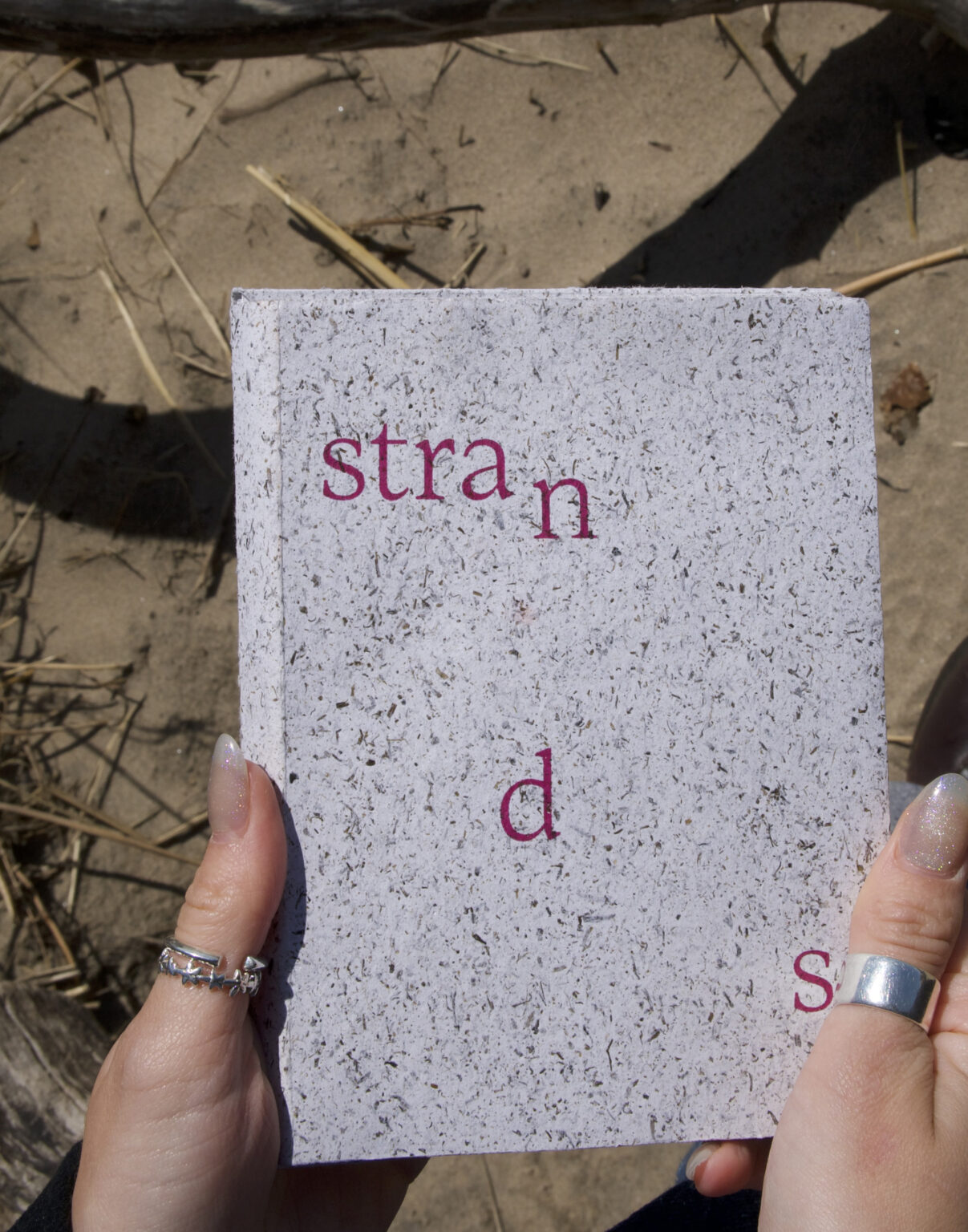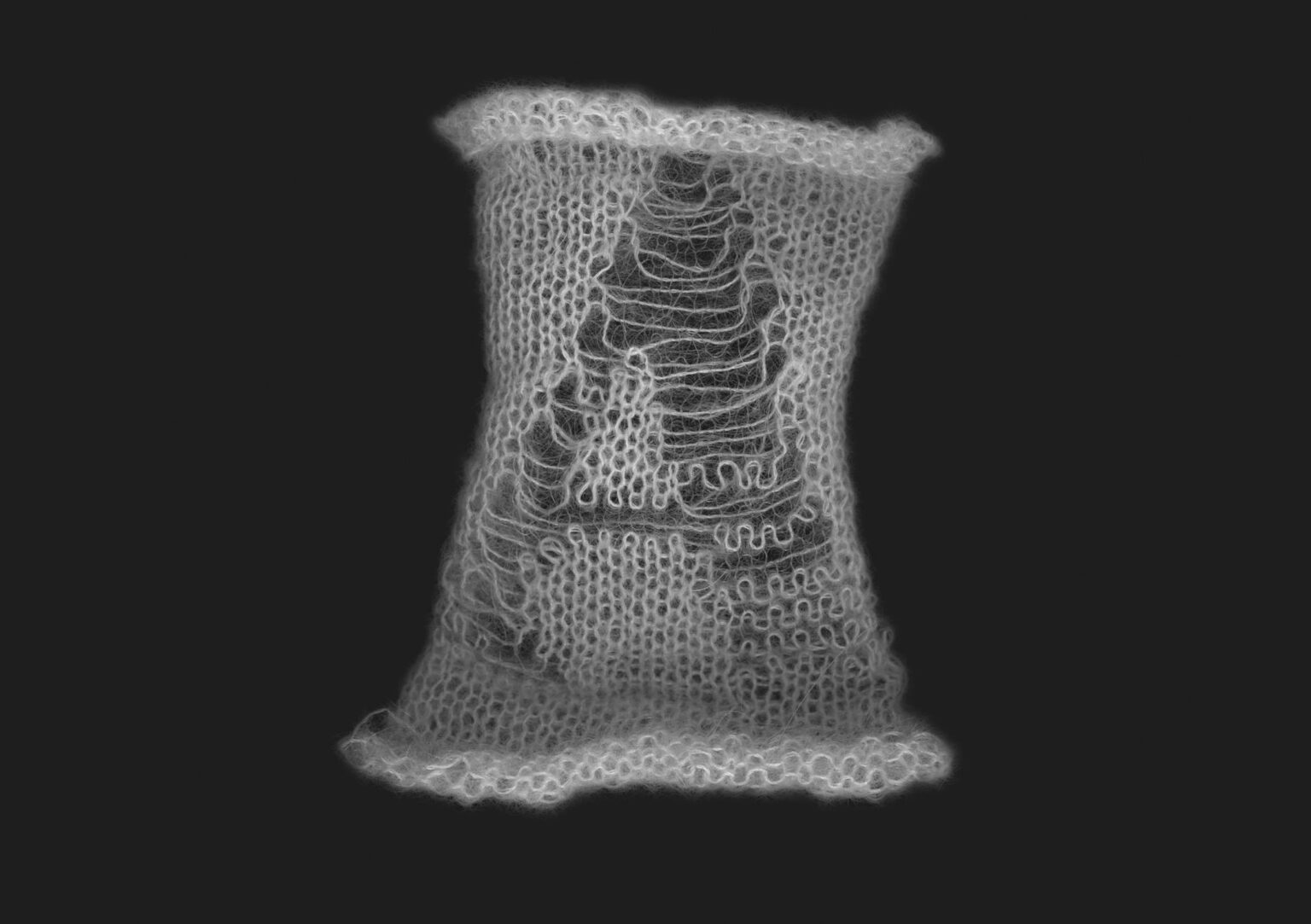Communication Design School of Design
Zara Glendinning

I am a designer whose work often focuses on typography, in both experimental and more formal structures. My design practice centres around a love of print and texture, and how meaning can be amplified within this, seen both in projects exploring typography translated to knit, but also in a digital type design project attempting to imbue elements of the textured within vector type. The themes I find myself drawn to often relate to my upbringing and familiar locations, but also a general love of nostalgia and resurfacing elements of the past in the present, often leading me to archives as an important part of my research practice. A subject that I have been very interested in this year, is the passing down of skills & knowledge, both from a personal and broader perspective.

‘Strands’ publication
This project was a response to my extended essay which focused on folklore and local knowledge archives, investigating how material rooted in oral transmission is stored and accessed. As a visual response, I gathered material surrounding the tradition of seaweed gathering, focused on but not limited to the North Coast of Northern Ireland and two transcripts from the Cushendall area.
While seaweed gathering was once a prominent trade on the island for coastal communities, the tradition has largely faded. My essay chapter contextualises the risk of losing this knowledge that is so intimately connected with the land within traditional archival structures, contrasting with those archives that exist which aim to rectify this issue. The book is a response to this- rebuilding a narrative surrounding the tradition by only archival research and presenting it in a way which highlights the important connection to the land that it uncovers.
The book focuses on format as a means of communication, consisting of one main section combining a chapter of my essay with archival material, and a separate accordion bound section of transcripts typeset like the seashore, combined together in an envelope-style book cover made from seaweed paper. All material is sourced from the National Museums NI website and the Dúchas.ie website.
‘Casting On’ Experimentation & Physical Samples
‘Casting On’ began as a project to explore experimental typography within the context of textiles, inspired by being recently handed down a 1970s punch-card knitting machine (an empisal knitmaster 321) from my granny. While knitting is a form of creativity that I have always been surrounded by, I was interested in how my current typographic practice could be influenced by this and how two separate disciplines could influence each other. Given that this was a process-led brief, I feel it is important to show the variety in my experimentation before landing on a final technique. The project transitions from a general alphabetical exploration to one that uses knitting abbreviations and notes from my granny to illuminate the samples, with these functional elements having a more decorative function instead. Rather than formal knitting technique, the project embraces mistakes and accidental finds through the process, using the machine and punch-lace function in a way that it isn’t strictly meant to be used but valuing the results from a typographic perspective.
Meitheal Type Design
This project began from an interest in the National Folklore Collection of Ireland, one of the largest folklore collections in the world gathered between 1935 and 1970, consisting of photographs, written accounts and recordings of folklore, local knowledge, traditions, trades & crafts. Given that so much of the material is rooted in language, I wanted to convey a unique aspect of the archive within a typeface. After a period of experimentation, I focused on the ‘Meitheal’ community transcription process of the archive, where anyone can log on to the digital archive and help transcribe the scans of collection books to increase accessibility of the material.
The outcome is Meitheal, a typeface named after this process and a word originating in agriculture, in rural Ireland referring to community and specifically, a group coming and working together to complete a job. The typeface attempts to imbue elements of traditional Irish script into a serif typeface, drawing out the texture of written forms through angles and varying brackets of letterforms. One particularly influential source was the Piaras Grás Manuscript available via the Irish Scripts on Screen website
All photos used are available on the digitalised version of the archive via Dúchas.ie
‘Casting on’ pattern outcome
A way of collating my typographic research and experimentation in a form that represented the beginnings and motivations for the project. The outcome is a form of printed matter resembling a set of patterns to be passed down. Pages with my typographic experimentation are interspersed with knitting patterns for objects that I was taught to make when I was younger, with these patterns hacked with personal memories and associations. The outcome aims to celebrate the passing down of familial skills, and the possibilities for building upon this, using my own personal experience and the integration of these two important forms of creativity in my life to represent this. Below are the pattern pages that I created to be interspersed with pages of my typographic experimentation
Meitheal Poster
A poster outcome returning the typeface to the concept that directly inspired it. The poster features an unconventional typographic arrangement and a formed definition that relates to the archive but also the original beginnings of the term in relation to community effort, acting as a celebration of the behind the scenes community work that was involved in both the creation and the maintenance of the collection


































